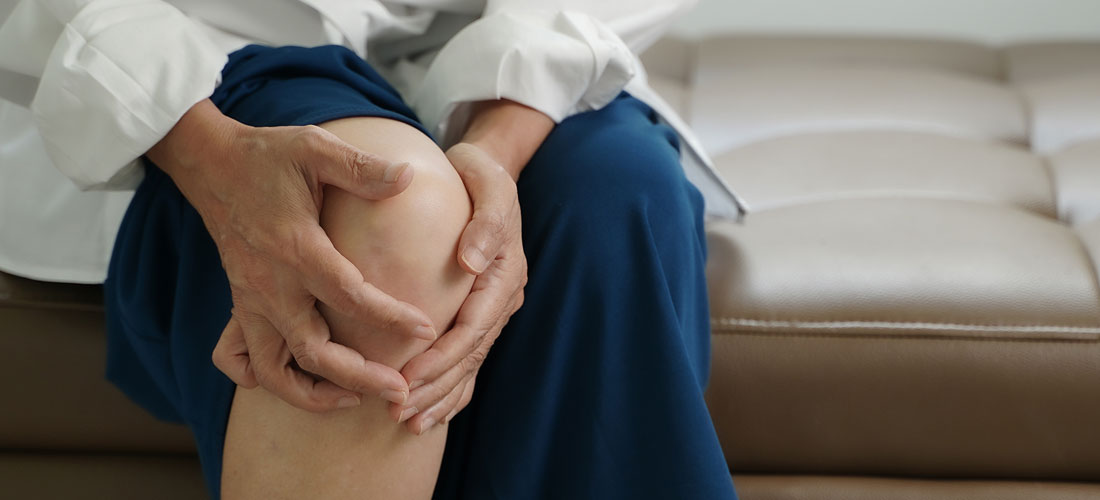Genicular Artery Embolization: A Modern Approach to Knee Osteoarthritis

Knee osteoarthritis is one of the most common causes of pain and loss of mobility worldwide. For some, it starts with stiffness in the morning or discomfort after walking long distances. For others, the pain grows severe enough to disrupt sleep and limit daily activity. Traditional treatments have included medications, physiotherapy, injections, and eventually knee replacement surgery. But not every patient is ready for or medically fit for surgery.
Genicular Artery Embolization (GAE) is changing the picture. This minimally invasive procedure offers meaningful pain relief, short recovery time, and the possibility of delaying or avoiding joint replacement. At RIVEA Hyderabad, GAE is performed with advanced imaging and expert precision, giving patients a safe option when other therapies no longer work.
Can Genicular Artery Embolization Replace Knee Replacement Surgery?
Knee replacement has long been considered the “last step” when arthritis becomes severe. The surgery removes damaged bone and cartilage, replaces them with an artificial joint, and typically requires weeks of rehabilitation. While highly effective in advanced disease, it is invasive and carries risks of infection, blood clots, and long recovery.
GAE offers a non-surgical alternative for many patients. The procedure involves threading a small catheter through a pinhole in the wrist or groin, then blocking the abnormal blood vessels that fuel inflammation in the knee joint. By reducing this blood flow, pain and swelling decrease.
Key differences stand out:
| Aspect | Knee Replacement | Genicular Artery Embolization |
|---|---|---|
| Invasiveness | Major open surgery | Pinhole procedure |
| Recovery time | Weeks to months | Days |
| Hospital stay | 3–5 days | Same day or 1 night |
| Joint preservation | Artificial joint replaces native joint | Natural joint preserved |
| Long-term outcome | Durable pain relief, mechanical joint lifespan | Durable pain relief, potential to delay or avoid surgery |
GAE cannot reverse “bone-on-bone” arthritis, where joint surfaces are completely worn down. But for patients whose main goal is pain relief and mobility, it can provide years of improvement without the risks of major surgery.
How Long Does Pain Relief Last After GAE?
Relief usually comes quickly. Many patients notice improvement within the first two weeks, with easier walking, reduced stiffness, and better sleep. Clinical studies show that benefits can last two to five years, depending on how advanced the arthritis is and how patients maintain joint health afterward.
Average recovery time is only a few days. Unlike knee replacement, there is no need for extensive rehabilitation, and most people return to normal routines within a week. For those looking to manage chronic knee pain without the disruption of surgery, GAE offers long-lasting relief that fits into daily life more easily.
What Makes GAE Different From Knee Injections?
Knee injections are often the first treatment beyond tablets and physiotherapy. Corticosteroids reduce inflammation, hyaluronic acid acts as a lubricant, and platelet-rich plasma (PRP) is thought to stimulate healing. But these injections tend to give temporary results, sometimes lasting weeks to months.
GAE is different because it targets the underlying mechanism. In osteoarthritis, abnormal new blood vessels around the joint release inflammatory substances. Embolization blocks these vessels, reducing both blood flow and inflammation at the source. This biological reset explains why results are often longer lasting than with injections.
| Treatment | Mechanism | Duration of Relief |
|---|---|---|
| Corticosteroid injection | Anti-inflammatory | Weeks to months |
| Hyaluronic acid injection | Joint lubrication | Months |
| PRP injection | Growth factors for healing | Variable, short-term |
| Genicular Artery Embolization | Blocks abnormal blood flow, reduces inflammation | 2–5 years |
For patients tired of repeating injections every few months, GAE offers a more durable solution.
How Do You Know If GAE Is Working?
Doctors track progress through both medical tools and patient experience. The simplest measure is pain relief. Patients often notice they can walk further, climb stairs with less difficulty, or reduce pain medication.
Objective methods include:
- VAS score (Visual Analog Scale): a standardized pain scale.
- Mobility assessment: measuring walking distance or stair climbing ability.
- Follow-up imaging: checking blood flow changes in the treated knee.
If pain has eased and movement has improved within weeks, it is a reliable sign that GAE is working as intended.
Is GAE Safe for Elderly Patients?
Many older adults live with knee arthritis but hesitate about surgery due to age or other health conditions. Safety is a real concern, and this is where GAE proves valuable.
The procedure is usually done with mild sedation and local anesthesia, avoiding the risks of general anesthesia. Blood loss is minimal, and hospital stays are short. Patients with diabetes, high blood pressure, or heart disease are typically eligible, provided they undergo routine evaluation beforehand.
For older patients who have been told surgery is too risky, GAE opens a safe, effective path to regaining mobility.
Why Choose RIVEA for GAE?
At RIVEA Vascular Institute, Genicular Artery Embolization is performed by Dr. Arjun Reddy, one of the top interventional radiologists in South India. His expertise ensures accurate targeting of knee vessels while protecting healthy tissue.
The department is equipped with the Allia IGS 7 platform, a next-generation imaging system that allows precise catheter navigation with controlled radiation exposure. This technology enhances safety and accuracy, which is especially important in delicate procedures like embolization.
Patients at RIVEA receive care tailored to their arthritis severity, medical history, and goals. Follow-up includes pain tracking, mobility assessments, and imaging when needed. The focus is on long-lasting pain relief, joint preservation, and helping patients maintain independence without rushing into surgery.
For anyone weighing options between injections, joint replacement, or innovative therapies, RIVEA provides world-class expertise with compassionate care.
-

Dr. Arjun Reddy
MBBS, MD
Chief Interventional RadiologistDr. Arjun Reddy is a highly accomplished Interventional Radiologist with extensive international training and a track record of pioneering minimally invasive, image-guided procedures in India.
View Profile Book an Appointment